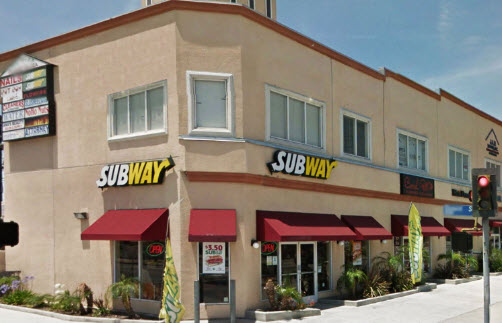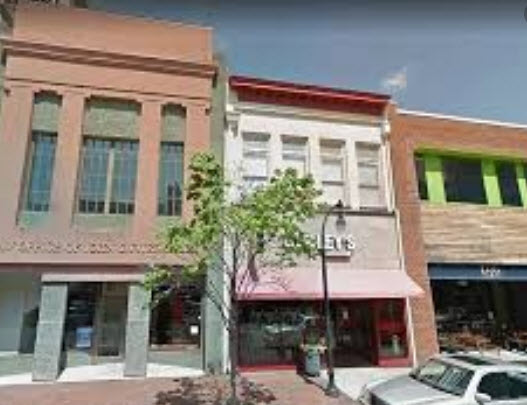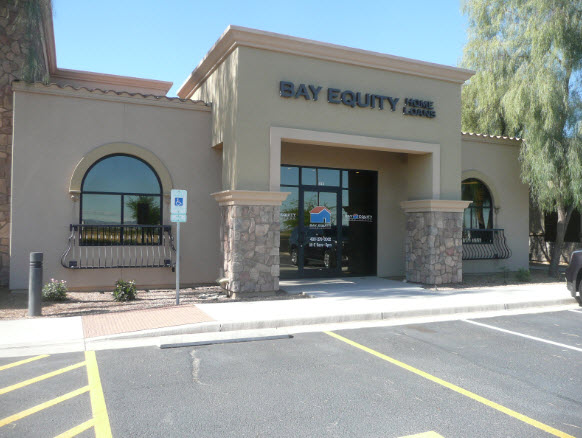
A commercial district is a group of commercial buildings, tyically offices or retail. Often a commercial district will have specific zoning which dictates a development plan. Zoning often specifies land use, lot sizes, setback requirements, parking requirements, and other regulations. Typical commercial districts are found:
There are various types of office buidlings. Each office type has economic characteristics that are unique, and should be considered seperately Some types of commercial office include:

Properites with various uses can be difficult to value because each use can be valued separately. These properties are often in urban areas, and each use has a lease structure that is usually different. Each lease often has different terms. With each type of user, assessing the risk to the cash flow becomes more complicated, and with it, the complexity of the value estimate.

Office on buildings with street level retail are often located in densely populated urban areas, including the Central Business District. These properties often have lots of foot traffic with good public transit. Tenant types include cell phone stores, restaurants, small convenience stores and other service business.
Tenants in the retail often have specialized, and typically more expensive, tenant improvements, which increase rents. They need good visibility, and good access. Parking is usually always an issue, especially with restaurant business.

Mid-rise office buildings can be found both in surburban locations and in the central business district. Mid-rise buildings are usually from four to sixteen stories, with each story adding to the expense of construction. Buildings with expansive common areas and architectural features increase the expense of construction, and with it, the required rents to tenants.
Building systems, like elevators, stairwells, and mechanical systems for heating and cooling, are all important for rents and occupancy rates. Also important are mass transit and/or parking, as well as technology systems like internet and phone capacity.
Tenants for mid-rise buildings are often local firms with a desire for higher visiblity in the market. This often means that the tenant is moving from a less desirable buidling to the mid-rise. In a Central Business District, mid-rise tenants can be national firms that don't need space in a prestigious high-rise.
A new mid-rise in a surburban area can create an oversupply, which will impact rents, as the new building cannibalizes adjacent office properties and forces a downward spiral of rents and occupancy.

High-rise office buildings are found almost exclusively in the central business district, (CBD). High-rise buildings are at least 16 stories, and have higher rents to justify the increase cost of construction and land prices. The tenants are usually high profile, including national credit tenants or well know local firms that want high visibility and good proximity to other well known tenants. As with mid-rise buildings, buildings with expansive common areas and architectural complexity increase the expense of construction, and with it, the required rents to tenants.
Building systems, like elevators, stairwells, and mechanical systems for heating and cooling, are all important for rents and occupancy rates. Also important are mass transit and/or parking, as well as technology systems like internet and phone capacity. With increasing height, rents typically also increase, as views are considered a premium that tenants are willing to pay for.
Buyers and owners of high-rise properties are often Real Estate Investment Trusts, (REITS), representing pension funds or insurnace companies. These are often Class A properties.

A low-rise, single tenat buiding, has only one tenant, or one owner/user. It is typically one to three stories high. The building often has a lot of space, likely with few single tenants in the market needing the room. If few tenants exist in the market willing to take the large space, then an examination of the building features can reveal if it can be economically converted into a multi-tenant space. Often smaller multi-tenant space attracts a wider tenant audience, and is therefore easier to rent up. Single tenant rents on a per square foot basis are often lower than those of similiar multi-tenant buildings, thus the interest in conversion to multi-tenant use.
If the space can not economically be converted into smaller space, then the building may suffer from functional obsolescence, and building value decreases.

Low-rise multi-tenant office buildings are found mostly in the suburbs. This property type is often owned by a single landlord or small corporation. If the tenants are compatible and benefit each other because of being adjacent to each other, then they might be willing to pay above market rents. Building space that can be easly reconfigured into varying suite size is an advantage in the market. Increased functionality usually leads to higher rents, and greater income to the landlords. Discount and capitalization rates may be higher, (resulting in a lower value), compared high-rise office buildings with greater prestige.
As with any office, parking and/or very good mass transit it a must for a successful office complex. If parking is scarce, employees may have to pay for parking blocks away, resulting in dissatisfaction, which almost always translates into lower rents. If a tenant runs a call center, with employees jammed into small cubicles, once adequate parking can quickly turn into not enough, stressing the cash flow to the building as unhappy tenants bail out at lease renewals.

Medical and dental offices are often found in suburban locations near residential properties, providing easier access for patients. They often cluser near hospitals or other medical office to provide synergy, and easier access for doctors in need of specialized medical expertise or diagnostic equipment that being adjacent to a hospital provides.
Value declines for medical office sometimes are precipitated by hospitals that close or move and build new elsewhere. Older medical facilities not adjacent to a hospital often have low values, which are reflections of poor rents. Medical office is also more expensive to build out, with specialized tenant improvements, (like plumbing, medical gas lines, lead lined rooms, etc). The expense of the build out often encourages doctors to stay, because of their investment in specialized improvements. Medical providers in such situations are often much less of a risk to the cash flow than ofther tenants because it is expensive to move.

Office condominiums are similiar to residential condominiums, in that each has a separate legal description, and are governed by a home owners association that help manage common areas, including parking lots, exterior lighting, and open space. They are typically owned by small business,and can include title companies, mortgage companies, or even doctors, dentists, and other medical professionals. Business owners are attracted to office condos as they provide the potential to equity build up, as opposed to renting, which provides the tenant with nothing at the end of the lease term. Values can be provided for each individual unit, often based on $/SF, or can be provided for the entire project if being developed from the ground up.
If being developed as a subdivision, the value is estimated by modeling the retail value of each unit, (often in grey shell form), sold over a perior of several quarters, minus the expense of construction and sell-out. Absorption and expenses are estimated, and a market discount rate is then applied to the cash flow over a sell out period.

Bank or credit union buildings are usually on the ground floor of a high-rise in an office building, or a single tenant building if found outside of the central business district. Banks will often have very good tenant improvements, to covey an image of success and safety to customers. In the central business district, they may be leased space, providing excellent safety to the landlord. In suburban settings, the land and the building are often owner occupied.
Banks often have expensive security features, which increase the cost of the tenant improvements, which encourages the bank to stay, because of the expense associated with building new expensive tenant improvements elsewhere. As such, if being rented, they provide much less of a risk to the cash flow.

Office buidlings are typically categorized as either Class A, Class B, or Class C. Classification provides a way of comparing buildings when providing an opinion of value. Classification can provide insight into the building's ability to attract and keep tenants, and provides insight into likely investors. Baked into the classification system is considerations for location, interior and exterior tenant improvements, mechanical and technological systems in the building, and market perception of the building in relation to competitors, along with likely rents and rent terms.
Class A Buildings
Class B Buildings
Class C Buildings